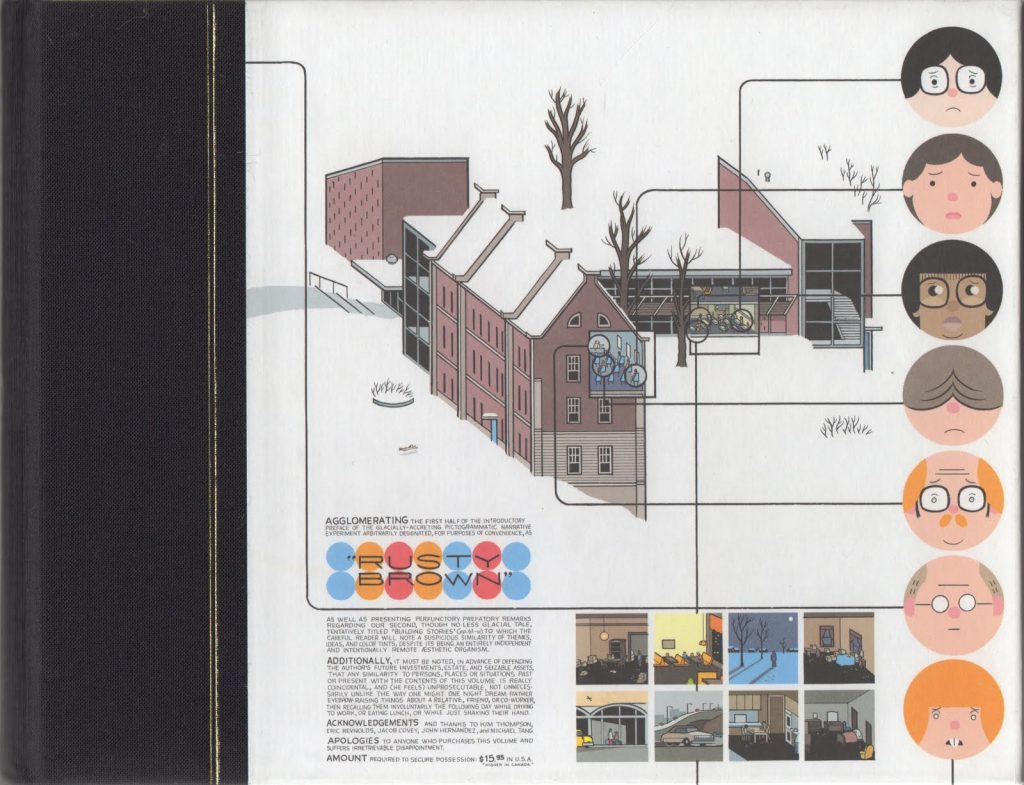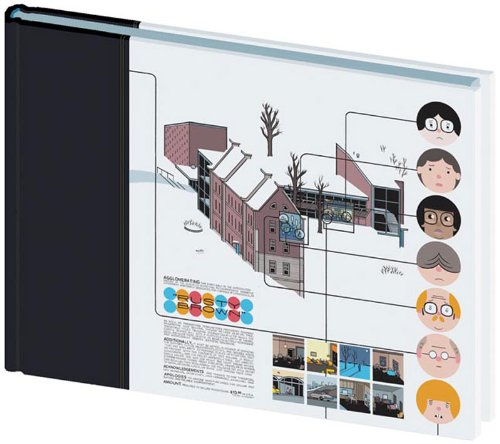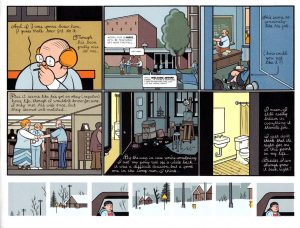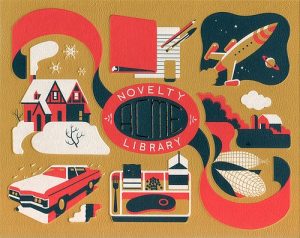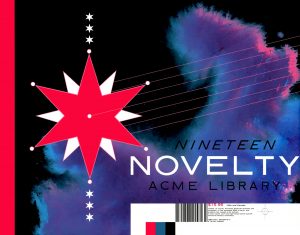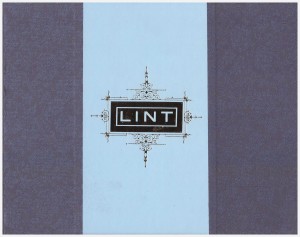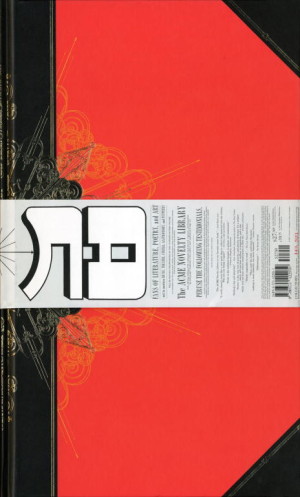Review by Graham Johnstone
Chris Ware’s personal anthology Acme Novelty Library delighted readers and print connoisseurs, while possibly frustrating librarians and booksellers with its ever-changing formats and unpredictable jumps between styles and continuities. By 2005’s 16th issue, though, Ware had begun self-publishing, in a more shelf-friendly series of landscape format hardbacks, eventually combined as Rusty Brown.
Earlier issues serialised Ware’s debut novel Jimmy Corrigan: The Smartest Kid on Earth. It’s named after a middle-aged loner, and his escapist fantasy as the sidekick of ‘Super-Man’. The title character of Rusty Brown is also a ‘kid’, a loner, and imagined sidekick of a superhero, so it’s similar in premise, but is it sufficiently different in execution?
The earlier book followed Jimmy (and ancestors) over several decades. In contrast, this opening part of the prologue to the follow-up spans a single day as experienced by multiple characters. In an Omaha, Nebraska school we meet (as arranged on Ware’s cover): newly arrived junior Chalky White; his big sister Alice; teacher Joanne Cole; slacker bully Jason/Jordan Lint; W.K. ‘Woody’ Brown; ‘Mr Ware’; and finally, Woody’s son, Rusty himself.
It opens with a poetic sequence about no two snowflakes being identical, playing ironically on the improbable collocation of near-identical loner nerds Rusty and (the correspondingly nicknamed) Chalky. The novel’s events unfold as the school day begins. Rusty, playing with his Supergirl action figure is lost in fantasies of heroism and nascent desire, as Woody bickers with his offstage wife, and barks orders at his distracted son. In a parallel sequence on the bottom row of each page we follow Chalky and Alice’s preparations for their first day, having been sent here to live with their grandmother. This lower sequence is particularly ‘glacial’ (Ware’s term), in order to synchronise with the multi-character main sequence. Charmingly, the two sections overlap and duplicate, as Woody watches the Whites arrive.
The mood is, typically for Ware, downbeat. The Whites are dreading their first day. Rusty is routinely bullied by Jason and crew, and having accidentally brought his Supergirl doll to school, fears new depths of humiliation. Jason, in turn, experiences only ennui, his bullying of Rusty as half-hearted as his sucking up to Mr Brown, and he only perks up at the appearance of new classmate Alice. The narration puts us into their inner conflicts. It’s mostly convincing, though occasionally over-explanatory, with teachers Woody and Joanne both wondering where their dreams have gone.
Ironically, the most apparently contented character is author avatar ‘Mr Ware’ – perhaps a playful reversal of reader expectation that he be constrained in teaching, and yearning for artistic freedom. He’s a minor character, though, perhaps there to confirm the story is rooted in Ware’s own experience. Moreover, Rusty, like Ware a child in the 1970s, is surely the deeper author surrogate.
There are some fine character moments, like when Jason insults the absent Woody on his chalkboard, and Alice corrects his spelling (“D-O-U-C-H-E. It’s French…”). The sequence with Rusty and Supergirl (“I always appear naked to those I trust”) is both completely inspired and cringe-inducing. This scene is mirrored in Chalky watching his sister dress. Initially angry, his evident anxiety for his first day turns her maternal.
The artwork with its slow, often silent, character sequences, is also familiar Ware. He’s a consummate visual artist with a much-copied style of diagrammatic cartoons, and architecture in 45-degree view. Here, though, the restricted school-house setting constrains, resulting in some repetition of imagery and palette. It’s nonetheless a compelling start, and bolstered with beautiful schematics of an apartment block with overlaid panel sequences about the residents, eventually the centrepiece of his 2012 Building Stories box.
